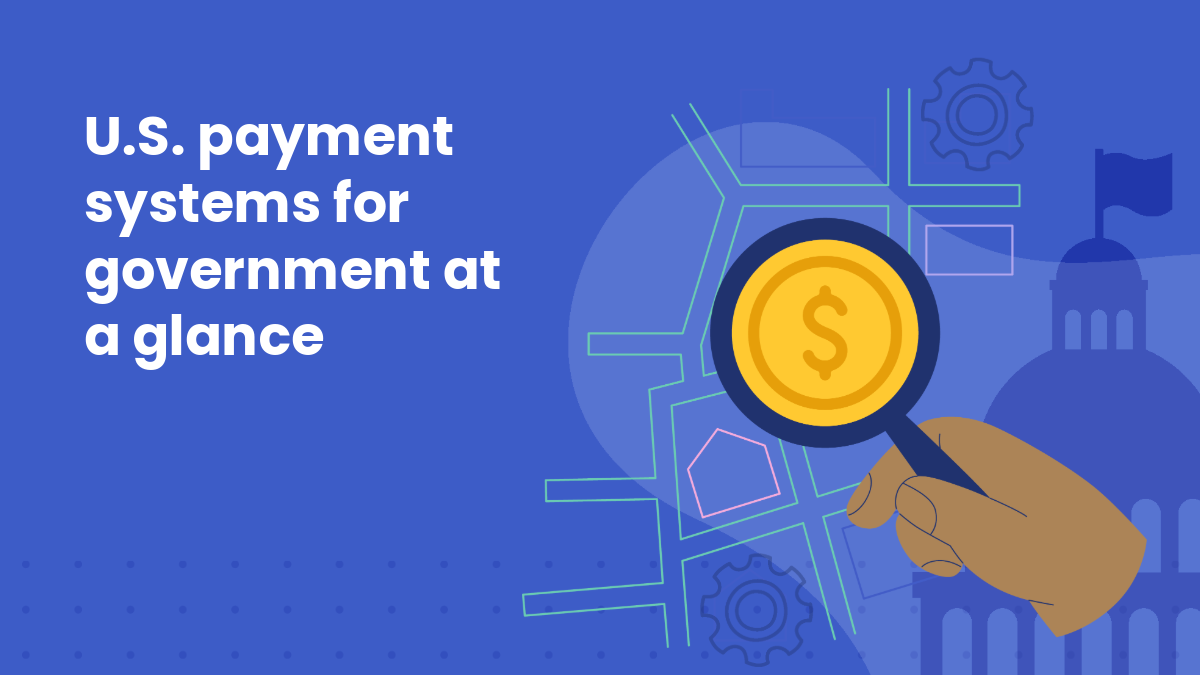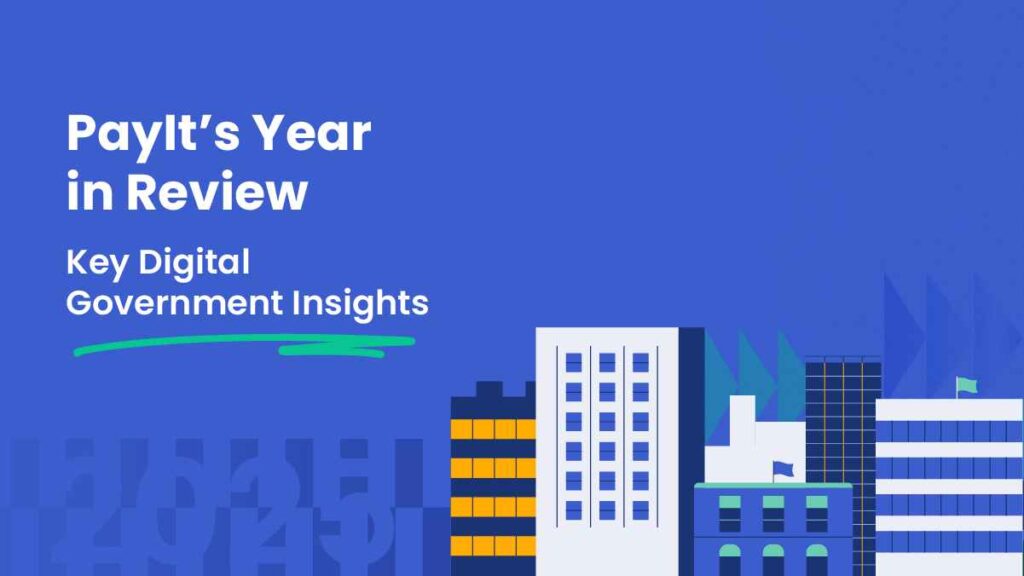U.S. payment systems for government at a glance

Card vs. ACH vs. RTP vs. FedNow
How money moves can be a mystery, but it doesn’t have to be. We’re going to break down what your agency needs to know about payments made using credit cards, ACH, RTP, and FedNow.
What are payment systems (AKA payment rails)?
Payments are processed on standardized systems that enable the transfer of money between a sender and a receiver. They form the infrastructure that moves funds from one place to another — each with its own rules, speed, and costs.
What are Card networks?
Visa, Mastercard, American Express, Discover
Visa, Mastercard, American Express, and Discover are the most popular card networks in the US. The card network acts as an intermediary between issuing banks and acquiring banks.
- Issuing banks are the financial institutions that issue the credit and debit cards to cardholders and are responsible for approving or declining transactions.
- Acquiring banks maintain merchant accounts and allow merchants to accept deposits from debit and credit card payments.
Are there benefits to cards?
Cards are a convenient way to pay online, over the phone, or in person, and are widely accepted. Merchants and customers have the benefit of knowing immediately if a card transaction succeeds or is declined. Some cards also offer discounts, rewards, or cash back as incentives for using the card. They may also offer protections, giving cardholders peace of mind when making purchases.
Cards are dominant among United States consumers
Card acceptance is widespread globally. In the United States alone, more than 150 million merchants accept card payments. Fewer than 10% of Americans primarily use cash for purchases, and credit card transaction volume has been growing at a rate of over 8% per year.
Automated Clearing House (ACH)
Operated by the Federal Reserve and The Clearing House
ACH is a nationwide electronic network for processing bank transactions. Banks exchange files and settle transactions in batches, making them great for payroll, bill pay, and subscriptions. Unlike cards, there are no authorizations when making ACH payments, so it may take days for merchants to find out that an ACH payment has failed.
Same Day ACH accelerates settlement into set clearing windows, but it’s still not real‑time.
ACH moves staggering volume. In 2024, the network processed 33.6 billion payments totaling $86.2 trillion.
Real Time Payments (RTP)
Real‑Time Payments, by The Clearing House
RTP is a bank‑to‑bank instant payment system that runs 24/7/365 and settles in minutes. Payments are final once posted.
The network’s per‑payment limit is $10 million (effective February 9, 2025); banks that join the RTP network choose whether to offer it to customers and may set lower limits. RTP also supports a Request for Payment (RfP) message for invoice‑style flows.
FedNow
Federal Reserve
FedNow is the Fed’s instant payment service launched in 2023. Similar to RTP, it runs around the clock and aims to make funds available immediately to recipients through participating financial institutions. Starting November 2025, FedNow’s network cap is $10 million per credit transfer (banks can set lower limits).
Limits and interoperability
Today, FedNow and RTP are separate networks; there’s no direct, automatic interoperability between them (though the Fed designed messaging to support future routing interoperability).
Remember! Some payments cannot be undone
Instant payments on FedNow are final and irrevocable once settled, similar in spirit to RTP’s finality. That’s a benefit for certainty, but it raises the bar on fraud controls and exception handling.
How to pick the right payment system for the job
Use these simple questions to narrow your choice:
1. How fast do funds need to post?
If seconds matter (payouts, past‑due bills, delivery‑upon‑payment), look to RTP or FedNow. If hours or next‑day is fine, ACH may be the best value. Cards authorize instantly, but settle later.
2. Do you need built‑in dispute and chargeback tools?
Cards have the most mature chargeback machinery; instant rails are credit‑push and final by design, so prevention and exception workflows matter more.
3. What’s the typical transaction size?
For large payments, check RTP and FedNow caps and your bank’s limits; for small consumer tickets with broad acceptance, cards are often the quickest path to completion
4. What’s your cost sensitivity?
ACH is generally the lowest‑cost at scale; card costs are higher but can support fraud checks, rewards ecosystems, and global reach
5. Who needs access? Consumers, businesses, or government?
All systems serve all three, but participation and features vary by institution and provider. FedNow’s scope is to reach institutions of all sizes, while RTP participation has grown rapidly across banks and credit unions.
Common misconceptions
- Treating instant payments like card payments
There are no routine chargebacks on RTP or FedNow. Build clear confirmation, refund, and exception flows up front. - Assuming “faster ACH” is the same as “real‑time”
Same Day ACH lets merchants receive their funds same day, but it’s not instant, and batch submissions must adhere to same‑day windows. - Forgetting network limits and bank‑level settings
Even when a system allows a high cap, your bank or provider may set lower limits based on risk appetite.
How digital platforms simplify how agencies get paid
Selecting the best payment system isn’t always straightforward. For many agencies and businesses, the choice depends on what they’re paying for, who they’re paying, and how quickly the funds need to move. That’s why tools and platforms that sit between the resident and the payment networks play a crucial role.
Companies such as PayIt help surface the right option for each task, guiding residents toward a method that balances cost, speed, and reliability. For example, a utility payment might default to ACH for lower fees, while a time-sensitive transaction could use an instant rail like RTP or FedNow. By handling these choices behind the scenes, companies like PayIt help agencies simplify complex payment workflows while giving residents a smooth, trusted experience.
Looking for more content?
Get articles and insights from our monthly newsletter.




